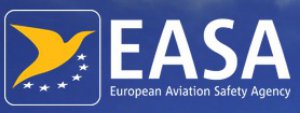The European Aviation Safety Agency (EASA) has issued a technical opinion on the future of unmanned aircraft systems (UAS) in the skies over the European Union (EU), dividing them into three classes, and issuing 27 recommendations for their safe operation in EU airspace.
This opinion is a technical one and hence proposes no draft legal text (implementing rules) beyond that proposed by the Aviation Strategy of the European Commission. This is not an Agency opinion in the sense meant by Article 19 of the Basic Regulation.
This Technical Opinion is the result of the consultation performed with A-NPA 2015-10. It has been developed in parallel to the draft modifications to Regulation (EC) No 216/2008 (hereinafter referred to as the ‘Basic Regulation’) included in the ‘Aviation Strategy to Enhance the Competitiveness of the EU Aviation Sector’(hereinafter referred to as the ‘Aviation Strategy’), published on 7 December 2015.
It includes 27 concrete proposals for a regulatory framework and for low-risk operations of all unmanned aircraft irrespective of their maximum certified take-off mass (MTOM). This regulatory framework is operation centric, proportionate, risk- and performance-based, and establishes three categories as follows:
- ‘Open’ category (low risk): Safety is ensured through compliance with operational limitations, mass limitations as a proxy of energy, product safety requirements, and a minimum set of operational rules.
- ‘Specific’ category (medium risk): Authorisation by a national aviation authority (NAA), possibly assisted by a qualified entity (QE), following a risk assessment performed by the operator. A manual of operations lists the risk mitigation measures.
- ‘Certified’ category (higher risk): Requirements comparable to those for manned aviation. Oversight by NAA (issue of licences and approval of maintenance, operations, training, ATM/ANS and aerodromes organisations) and by EASA (design and approval of foreign organisations).
The present Technical Opinion does not include new draft legal text beyond the one that has been proposed by the Aviation Strategy. Its purpose is to lay the foundation for future work, illustrate the contents of the draft changes to the Basic Regulation and serve as guidance for Member States (MS) to develop or modify their regulations on unmanned aircraft.
The concept proposed by A-NPA 2015-10 has been kept, but adaptations and clarifications have been introduced in several parts. Exact definitions and applicability of some proposals will have to be determined by thorough regulatory impact assessment (RIA) during the drafting of implementing rules (IRs). This Technical Opinion, including a road map presenting the steps to be taken in the future, is only one step in the development of rules for unmanned aircraft.
Purpose of the Technical Opinion:
It contains no legal text beyond what has already been made public as part of the Aviation Strategy as it is intended to:
- lay the foundation of future work, notably the development of the necessary IRs in accordance with the Agency’s rulemaking process;
- illustrate the articles and essential requirements on unmanned aircraft included in the draft revision of the Basic Regulation that was issued as part of the Aviation Strategy on 7 December 2015;
- serve as guidance for MS that have no rules for small unmanned aircraft or plan to modify their existing ones to ensure consistency as much as possible with the intent of the future EU rules;
- provide a road map presenting the steps to be taken in the future.
Source: EASA

